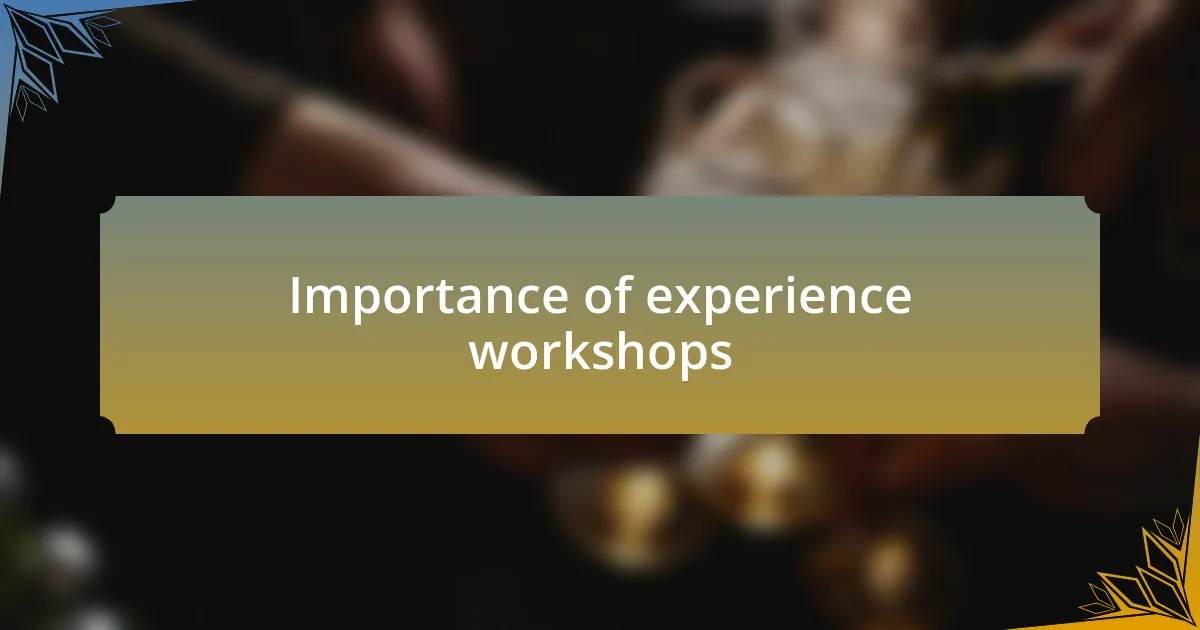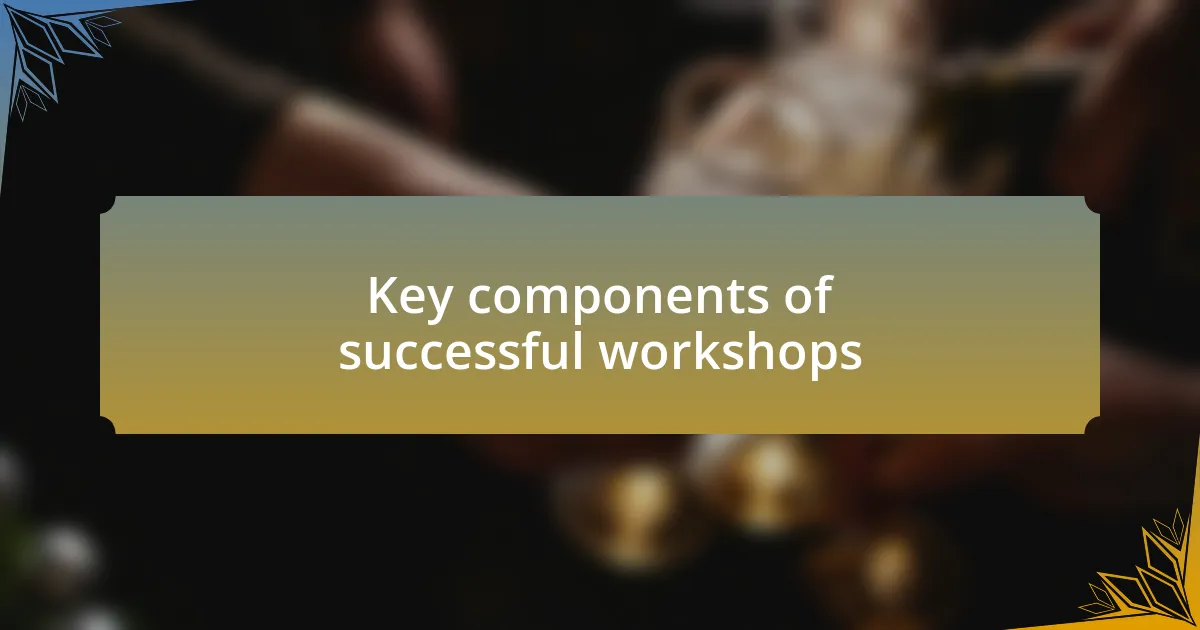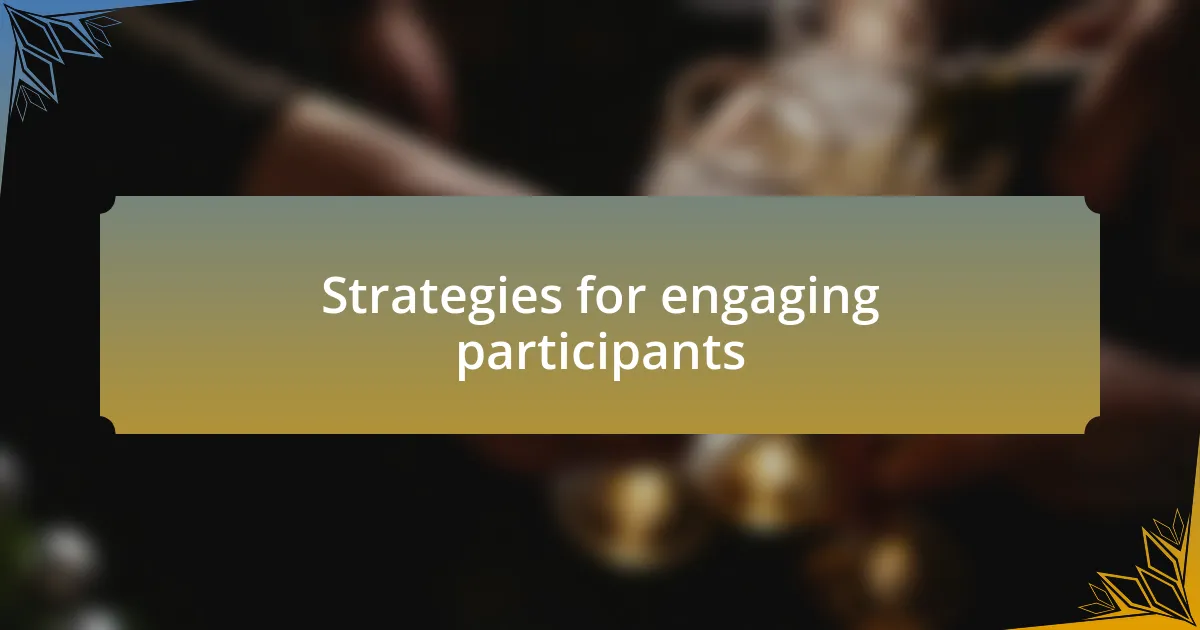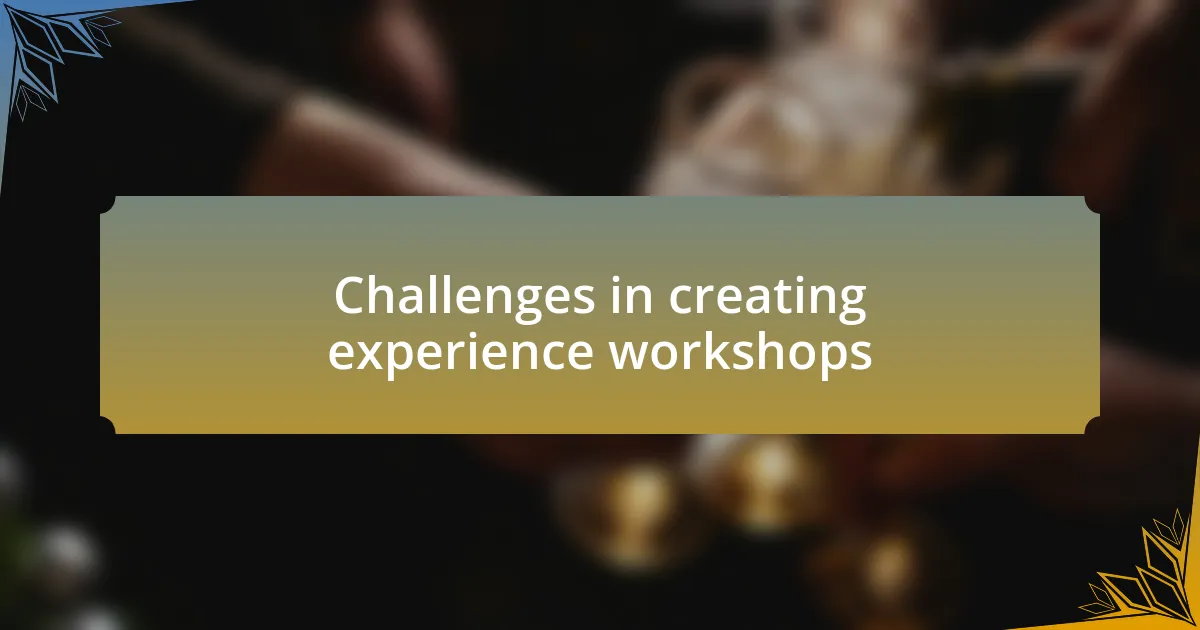Key takeaways:
- Customer experience workshops foster collaboration and innovation, aligning team understanding of customer experience.
- Success relies on clear agendas, an inclusive environment, and interactive elements to engage participants meaningfully.
- Integrating storytelling and recognizing contributions boosts engagement and creates a more connected atmosphere.
- Adapting to participants’ needs and managing diverse expectations are crucial for overcoming challenges during workshops.

Understanding customer experience workshops
Customer experience workshops are more than just gatherings; they’re immersive spaces for collaboration and creativity. I remember attending a workshop where diverse teams shared their perspectives and insights. It was eye-opening to see how different backgrounds could lead to innovative solutions that improved customer journeys. Doesn’t it make you wonder how much we could unlock if we embraced such collaborative environments more often?
At their core, these workshops aim to align everyone’s understanding of what customer experience truly entails. I often ask clients what they envision when they think of ‘customer experience,’ and the wide array of responses reveals a gap in understanding. This realization is crucial because it highlights the need for a shared vision among team members, ensuring that everyone is on the same page to create meaningful experiences.
Incorporating real-life scenarios into these sessions can amplify their impact. I recall facilitating a workshop where we role-played various customer interactions. Seeing participants react in real-time was enlightening. It fostered empathy and a greater appreciation for the customer’s perspective. Have you ever experienced the shift in mindset that occurs when you put yourself in someone else’s shoes? It’s transformative and showcases the essence of effective customer experience workshops.

Importance of experience workshops
Experience workshops are vital in bridging the gap between theory and practice. I recall leading a session where team members broke down their touchpoints with customers, revealing not only pain points but also areas of delight. The energy in the room shifted as we began to see the journey through the customers’ eyes, sparking discussions that led to actionable improvements.
These workshops cultivate a mindset of continuous learning and adaptation. In one particularly memorable workshop, participants were encouraged to share their most significant customer service failures. What struck me was the catharsis of sharing these experiences; it fostered a culture of openness and resilience. When individuals feel safe to explore their missteps, they often emerge with fresh insights and a renewed commitment to excellence.
Moreover, the collaborative nature of these workshops can lead to breakthrough innovations. I’ve seen quiet voices suddenly come forward with ideas that were previously unheard in a more traditional setting. Doesn’t that just illustrate how powerful it can be when every team member feels empowered to contribute? That’s the essence of an effective experience workshop—harnessing collective intelligence to shape unforgettable customer journeys.

Key components of successful workshops
Creating successful workshops hinges on a few critical components that I’ve consistently observed in my experience. First and foremost, setting a clear agenda is essential; it provides a roadmap for the participants. I remember a workshop where we dove into a complex topic without a defined focus. It quickly became overwhelming, and the participants struggled to engage. Clarity in purpose guides not only the discussion but also keeps energy levels high.
Another vital component is fostering an inclusive environment. I’ve seen how a diverse range of perspectives enriches the experience. During one workshop, I deliberately paired experienced team members with newer recruits. The synergy was remarkable; established employees shared their insights while fresh voices brought in innovative ideas. It was a beautiful reminder of how collaboration can elevate the conversation, don’t you think?
Finally, incorporating interactive elements is key to keeping participants engaged. In a recent workshop, we introduced role-playing scenarios to simulate customer interactions. The laughter and real-time feedback sparked deeper reflections on each participant’s approach. It made me realize that learning through experience often leaves a more lasting impression than traditional lectures ever could. How do you think your team would respond to such hands-on activities? It’s about creating memorable moments that lead to genuine understanding and growth.

Strategies for engaging participants
In my experience, inspiring participation often comes down to integrating storytelling into the workshop. I once shared a compelling case study about a brand’s turnaround which captivated the audience. It connected with their emotions; suddenly, they weren’t just passive listeners, but active members of the narrative. Have you noticed how stories can transform a mundane topic into something relatable and impactful?
Another effective strategy I’ve employed is utilizing small group discussions. This encourages quieter participants to voice their thoughts comfortably among peers. In one workshop, breaking into smaller units led to vibrant conversations and unexpected insights that otherwise might’ve gone unheard. Isn’t it fascinating how sometimes the best ideas emerge in more intimate settings?
Lastly, recognizing and celebrating participant contributions can significantly boost engagement. During a recent session, I made a point to highlight individual achievements, however small, which visibly uplifted the group morale. Participants left feeling valued, and it sparked a ripple effect of enthusiasm throughout the workshop. How do you cultivate that sense of recognition in your workshops? It’s these little acknowledgments that can create a more connected and energetic atmosphere.

Personal insights on workshop design
When designing workshops, I find that setting the right atmosphere is crucial. For instance, in one session, I dimmed the lights and played soft music as participants arrived. This simple act shifted the energy in the room, making everyone feel more open and relaxed. Have you ever noticed how the environment can influence the mood of a group?
Another aspect I prioritize is clarity in objectives. I vividly recall a workshop where I clearly outlined what participants would gain from the experience. This created a sense of purpose that resonated with the team, driving engagement. People are more inclined to participate when they understand the “why” behind their efforts. Do you think outlining goals can impact how attendees perceive the value of a workshop?
Finally, I’ve learned the importance of adaptability during workshops. One memorable occasion saw me pivot the agenda based on a lively discussion that emerged unexpectedly. Instead of adhering strictly to my plan, I embraced the spontaneity, which led to deeper insights and a more interactive experience. Doesn’t it feel rewarding to let the participants lead the conversation sometimes? This flexibility often enriches the overall effectiveness of the workshop.

Challenges in creating experience workshops
Creating experience workshops often comes with unexpected hurdles. I faced a significant challenge once when a key speaker canceled last minute. This thrown-off schedule tested my ability to think on my feet. Have you ever found yourself scrambling to maintain momentum in a session? It’s crucial to have backup plans to ensure that participants remain engaged and don’t lose focus.
Another hurdle can be managing diverse participant expectations. In one workshop, I encountered a mix of attendees—from seasoned professionals to novices—all with their own ideas of what they hoped to gain. Balancing these varied expectations felt like trying to juggle while riding a unicycle. How do you cater to such a range of backgrounds and needs? I discovered that incorporating breakout sessions allowed groups to connect more meaningfully, ultimately fostering a richer learning environment.
Lastly, technology can be a double-edged sword in workshops. While it has the power to enhance the experience, I’ve faced technical glitches that stalled discussions. Once, during a virtual workshop, the presentation software crashed, leaving a room full of eager learners in silence. It taught me the importance of having a human touch and being present with participants, regardless of the tech mishaps. Isn’t it interesting how the most memorable moments often arise from challenges we face?